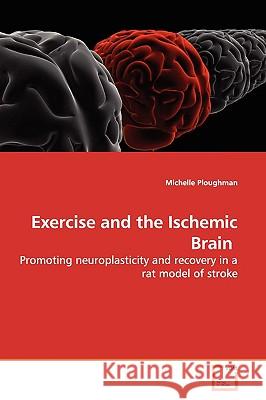Exercise and the Ischemic Brain » książka
Exercise and the Ischemic Brain
ISBN-13: 9783639152692 / Angielski / Miękka / 2009 / 120 str.
Stroke is one of the leading causes of disability and the hemiplegic upper extremity is particularly resistant to rehabilitation intervention. Endurance exercise, outside of its beneficial effects on the cardiovascular and musculoskeletal systems, influences brain remodelling, learning, and memory. In our experiments, we determined the effects of exercise on critical mediators of neuroplasticity (brain-derived neurotrophic factor (BDNF), insulin-like growth factor (IGF-I), synapsin-I, phosphorylated cyclic AMP response element binding protein (pCREB) and serum corticosterone) in a rat model of middle cerebral artery stroke. It was clear the intensity and duration of exercise had differential effects on proteins that affect neuroplasticity after stroke. Furthermore, animals receiving running exercise preceding a skilled reaching task recovered better than animals that did not. Endurance exercise appears to have an enhancing effect on learning of a subsequent reaching skill mediated in part by structural changes within the brain. This phenomenon may be beneficial when arranging therapeutic activities during stroke rehabilitation.











